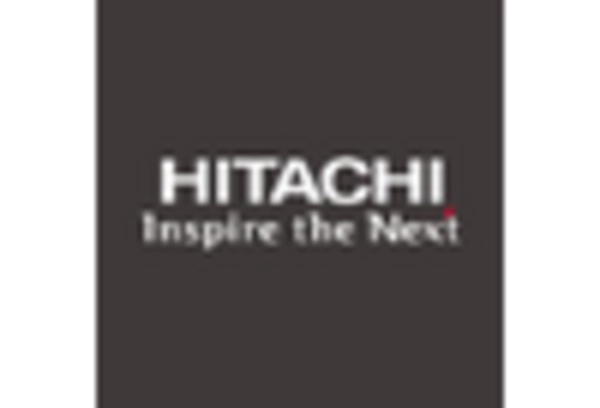Rising Demand for Electric Vehicles
The increasing consumer preference for electric vehicles (EVs) is a primary driver for the Medium-Power Electric Vehicle Busbar Market. As more individuals and organizations seek sustainable transportation solutions, the demand for medium-power electric buses is expected to rise. According to recent data, the electric bus market is projected to grow at a compound annual growth rate (CAGR) of approximately 20% over the next five years. This surge in demand necessitates the development of efficient busbar systems that can handle the power requirements of these vehicles. Consequently, manufacturers are focusing on enhancing the design and efficiency of busbars to meet the evolving needs of the medium-power electric vehicle sector. The Medium-Power Electric Vehicle Busbar Market is thus positioned to benefit from this trend, as it aligns with the broader shift towards electrification in transportation.
Government Initiatives and Incentives
Government initiatives aimed at promoting electric mobility play a crucial role in driving the Medium-Power Electric Vehicle Busbar Market. Various countries have implemented policies and incentives to encourage the adoption of electric buses, including subsidies, tax breaks, and funding for infrastructure development. For instance, several regions have allocated substantial budgets to support the transition to electric public transport systems. This financial backing not only stimulates demand for electric buses but also creates a favorable environment for the development of associated technologies, such as busbars. As governments continue to prioritize sustainability and reduce carbon emissions, the Medium-Power Electric Vehicle Busbar Market is likely to experience accelerated growth, driven by these supportive measures.
Advancements in Charging Infrastructure
The expansion of charging infrastructure is a significant driver for the Medium-Power Electric Vehicle Busbar Market. As the number of electric vehicles on the road increases, the need for efficient and widespread charging solutions becomes paramount. Recent reports indicate that The Medium-Power Electric Vehicle Busbar is expected to grow significantly, with a projected CAGR of over 25% in the coming years. This growth in charging infrastructure directly impacts the demand for medium-power busbars, which are essential for managing the electrical distribution in charging stations. Enhanced charging capabilities not only improve the user experience but also support the operational efficiency of electric buses. Therefore, the Medium-Power Electric Vehicle Busbar Market stands to gain from the ongoing investments in charging infrastructure, which are critical for the successful integration of electric vehicles into public transport systems.
Integration of Renewable Energy Sources
The integration of renewable energy sources into the electric vehicle ecosystem is emerging as a key driver for the Medium-Power Electric Vehicle Busbar Market. As the world shifts towards cleaner energy solutions, the demand for electric buses powered by renewable sources is increasing. This trend necessitates the development of advanced busbar systems capable of handling variable power inputs from solar, wind, and other renewable sources. Recent studies indicate that the use of renewable energy in electric transportation can significantly reduce greenhouse gas emissions. Therefore, the Medium-Power Electric Vehicle Busbar Market is poised to benefit from this transition, as it supports the infrastructure needed for a sustainable electric vehicle future.
Focus on Energy Efficiency and Sustainability
The growing emphasis on energy efficiency and sustainability is reshaping the Medium-Power Electric Vehicle Busbar Market. As environmental concerns become more pronounced, manufacturers are increasingly prioritizing the development of energy-efficient busbar systems that minimize energy loss during power distribution. This focus aligns with global sustainability goals and the push for greener transportation solutions. Data suggests that energy-efficient technologies can reduce operational costs for electric buses, making them more attractive to fleet operators. Consequently, the Medium-Power Electric Vehicle Busbar Market is likely to see innovations aimed at enhancing the energy efficiency of busbars, thereby contributing to the overall sustainability of electric public transport.


















Leave a Comment